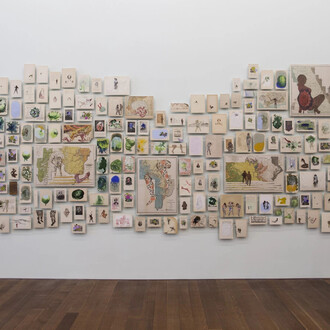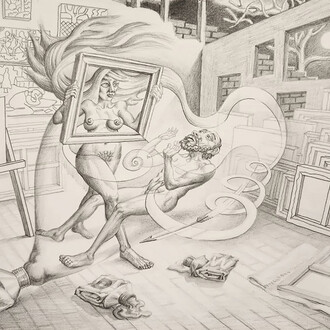Ethel Stein is an artist who only now, at the age of 96, is beginning to get the recognition she deserves from the broader public. She has never been overly concerned with promoting or marketing her work, and she has tended to lean “counter-trend,” as textile designer Jack Lenor Larsen has aptly put it, creating squares of quiet pattern to be placed on walls at a time when other textile artists were emphasizing the sculptural potential of fiber by working in three dimensions. Produced on a drawloom—a type of handloom that incorporates a figure harness capable of controlling each warp thread separately—her work seems deceptively simple, but as one understands the mysteries and complexities of this weaving method historically favored for creating figured textiles, the sophistication and challenge of her work become undeniable.
Stein’s great contribution to weaving is her unique combination of refined traditional weaving techniques, possible only on a drawloom and used by few contemporary weavers, with modernist sensibilities influenced by Josef Albers, who trained in the German Bauhaus with its emphasis on simplicity, order, functionality, and modesty. Over the years she has favored three particular structures with strong historical traditions—damask, double-cloth, and lampas—and it is due to the flexibility of the drawloom that her work appears so refreshingly uncomplicated.
This exhibition, presented in the newly reopened textiles galleries comprised of the Agnes Allerton Gallery and the Elizabeth F. Cheney Gallery, presents drawloom weavings executed by the artist from 1982 through 2008. All works are either already in the collection of the Art Institute or have been promised as gifts. The retrospective installation celebrates in particular Ethel Stein’s generous donation of 34 of her own works two years ago, as well as Leanne Lachman’s promised gift of four additional pieces, which help fill out the picture of Stein’s impressive career. These 38 weavings join a work in five parts, woven in 1982, that came into the collection in 1985, courtesy of the Nicole Williams Contemporary Textile Fund.



















